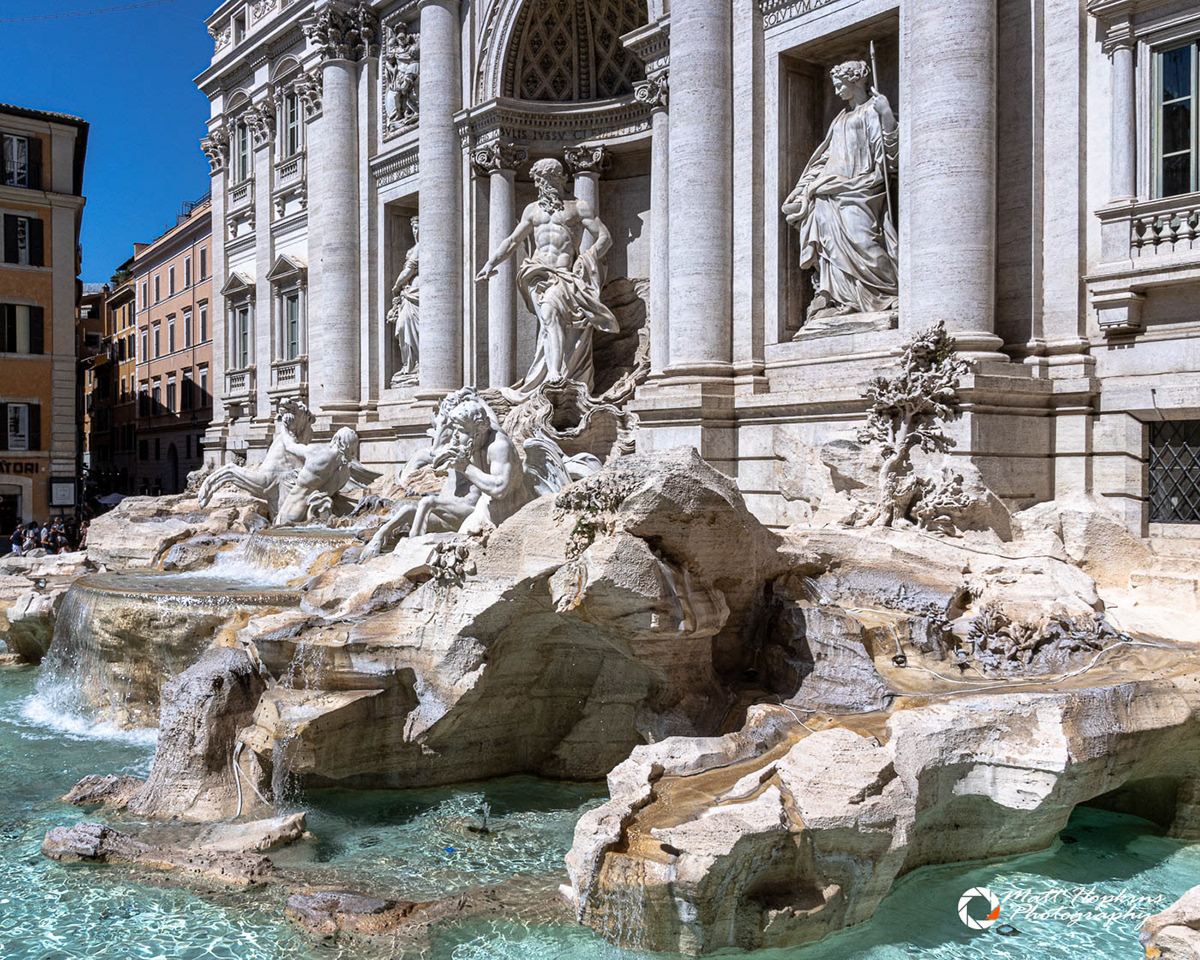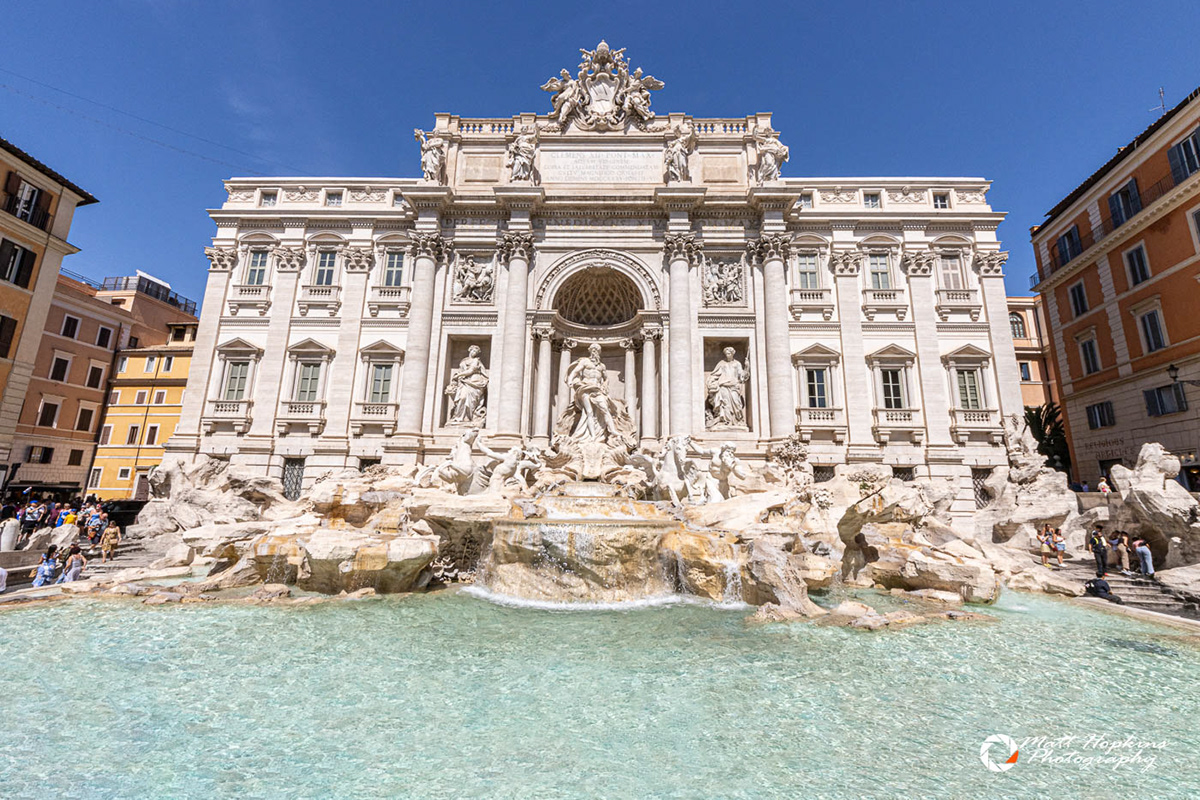Trevi Fountain
Oceanus, The Tritons and Palazzo Poli
_______________________________________________________________________
Oceanus, The Tritons and Palazzo Poli
_______________________________________________________________________
Oceanus
In the heart of Rome, amidst the cobbled streets and whispering history, the Trevi Fountain roars to life. At its center, a titan emerges from the cascading water. Oceanus, the god of the sea, stands imperious in his chariot. His beard, sculpted by wind and spray, seems to bristle as two seahorses, one calm, one raging, strain against their bridles. Above him, a triumphant arch frames the spectacle, a testament to the untamed power and endless bounty of the ocean he commands.
Every coin tossed into the fountain's depths is an offering to this magnificent being. Tourists whisper wishes on the breeze, hoping they'll be swept away to Oceanus' watery realm, a realm of hidden treasures and whispered secrets, promising a return to the magic of Rome.

The Tritons
Flanking the majestic Oceanus within the Trevi Fountain, the two tritons embodied contrasting energies. The elder, his powerful form sculpted by years battling ocean currents, held a conch shell to his lips. The wind seemed to carry a melancholic melody, a yearning for the boundless freedom of the open sea perhaps, a stark contrast to the bustling tourist scene before him.
His younger companion, muscles taut with youthful vigor, wrestled playfully with a seahorse. Its flicking tail and glistening scales hinted at the untamed power it held, a power the young triton mirrored in his own restless gaze. Both figures, while forever bound to their roles as guardians of the fountain, seemed to hold a silent conversation, a shared longing for the untamed world they once patrolled.

Palazzo Poli
Palazzo Poli, a grand Roman residence, stands proudly yet discreetly behind the cascading waters of the Trevi Fountain. Its history is intertwined with the iconic landmark. Built in the 16th century, the palace underwent a dramatic transformation in the 18th century. To make way for Nicola Salvi's masterpiece, the Trevi Fountain, a portion of the palazzo was removed. Architect Luigi Vanvitelli then redesigned the southern facade, imbuing it with a Baroque grandeur that perfectly complemented the dramatic fountain. Palazzo Poli became not just a residence, but an integral part of the Trevi's stage set, a silent witness to the countless coins tossed and wishes whispered into the fountain's churning heart.

